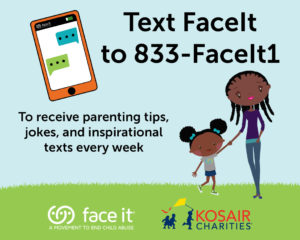
20 May Trauma comes in all shapes, sizes, and colors…
TRIGGER WARNING This article or section, or pages it links to, contains information about sexual assault and/or violence which may be triggering to survivors.
Blog written by Leigh Ann Yost
May is Trauma Awareness Month, following April’s Child Abuse Prevention Month. Just another awareness month, right? No, it’s not. Everyone knows you shouldn’t abuse kids, but not everyone knows what trauma looks like.
Look, bad things happen to everyone but they do not affect people the same. Trauma comes in all shapes, sizes, and colors. It can range from a car wreck to physical and emotional abuse over a period of time to a child’s pet dying. Our responses are what’s key, and not everyone has the same set of keys to the same set of doors. And some doors are revolving, making the trauma ongoing.
As humans, most of us are – – pleasers, by nature.. We want to get along with people. We want to understand people. So, as a survivor of childhood sexual abuse I’m sharing what trauma looks like in my life on the daily.
This morning my dog barked so loud I peed my pants. Like really peed my pants, not like OMG I just peed my pants laughing! Yesterday I smelled something that reminded me of my grandfather: a cologne maybe? I immediately got super sick to my stomach. Anything and I mean ANYthing near my right ear (whispers, ear things at the doctor) that isn’t my own doing sends me through the roof. I’m told that’s because that’s “the ear that was whispered in” by my abusers and I’m having muscle memory as the trauma response. Sometimes my peripheral vision is TOO much for me to handle, almost like a migraine. Sometimes I can’t leave the house. I have Complex Post Traumatic Stress Disorder and work hard so that it doesn’t affect other people. There are ripples, though.
The key to resolving trauma is releasing it while building resilience. I call this the “Resilience Wallet” because it’s like a bank of money. If you spend too much of it, you’re in distress. When you have enough of it, you’re comfortable. Like on pay day!
When I put “money” into my “wallet” it looks like this: 12-step meetings, daily self-care mini sessions, checking in with another human regularly, talk therapy, trauma touch therapy, massage therapy, self -reflection and accountability of my part. If I ignore any part of my “money making scheme”, my well being starts to suffer. For instance, if I don’t stop and meditate in the morning without news or other info, my days do not go as well as they would have if I had meditated. That makes things not-so-pleasant for people around me, and my job performance could even suffer. These are my self-soothing techniques for the responses coming from the trauma releasing from my body.
So, when you can’t self soothe, you tend to self-medicate. At least that was my experience, and almost everyone in my 12-step programs was abused as kids. There is no shame in recovery because the trauma is the cohesive factor and the “gateway drug.”. It’s all relatable “in the rooms.”
Bottom line is this: you don’t know what you don’t know. The guy that cut you off this morning could have just found out his mom died. The clerk who is snappy with you and didn’t say “thank you” just got informed she isn’t getting the raise she was promised. That young man who is screaming expletives at the police is venting. What happened? We have to start thinking in terms like “what happened to you,” not “what’s wrong with you.” Particularly with young people.
When we can all understand that we have the same needs as humans, and that is to be accepted and loved, we can all start putting more and more money into our Resilience Wallets, and even spreading some of that “money” around! Like the lottery!
To learn more about Leigh Ann’s journey and for additional resources visit Leigh Ann The Advocate.
The Bounce Coalition builds the resiliency of children, adults, and families by improving knowledge about the impact of adverse childhood experiences (ACEs) and the skills to help people bounce back from adversity. Check out Bounce’s menu of training options for organizations, parents/caregivers, and the broader community.
Check out Face It’s THRIVE brochure, which offers information for parents and caregivers on understanding trauma, promoting healing, and helping families continue to thrive.




